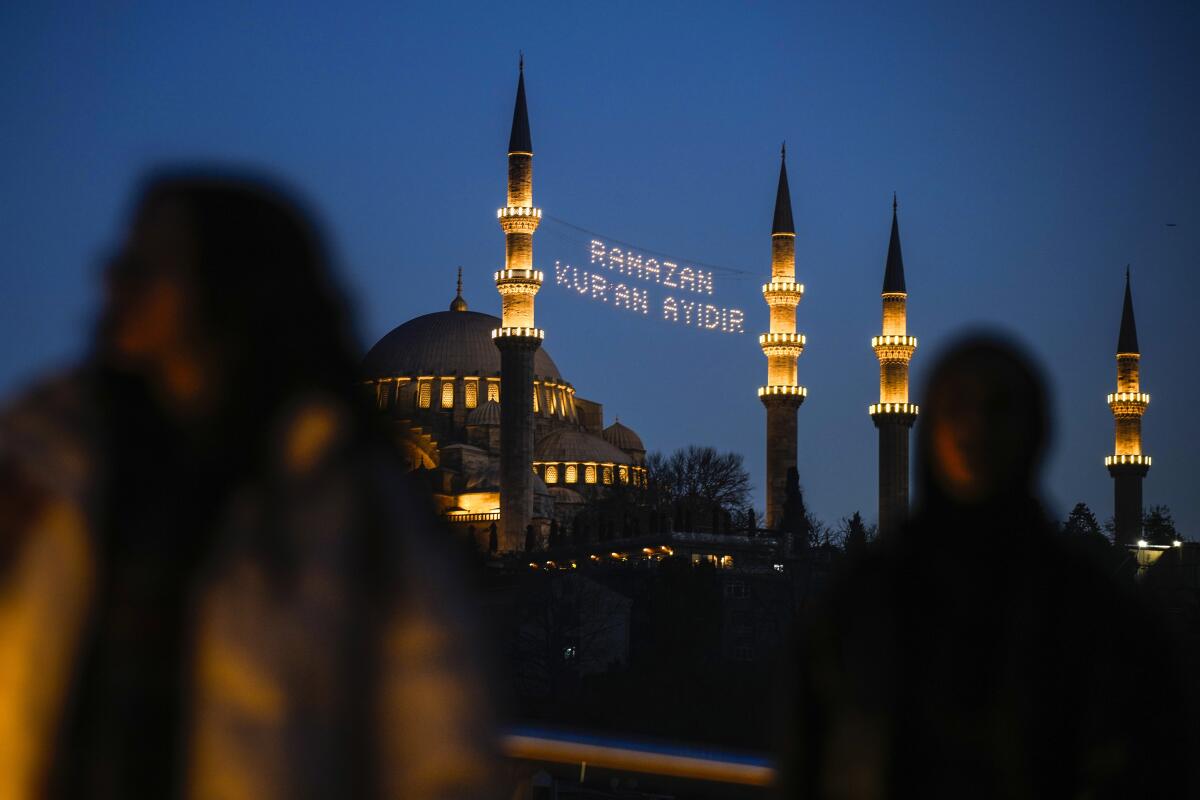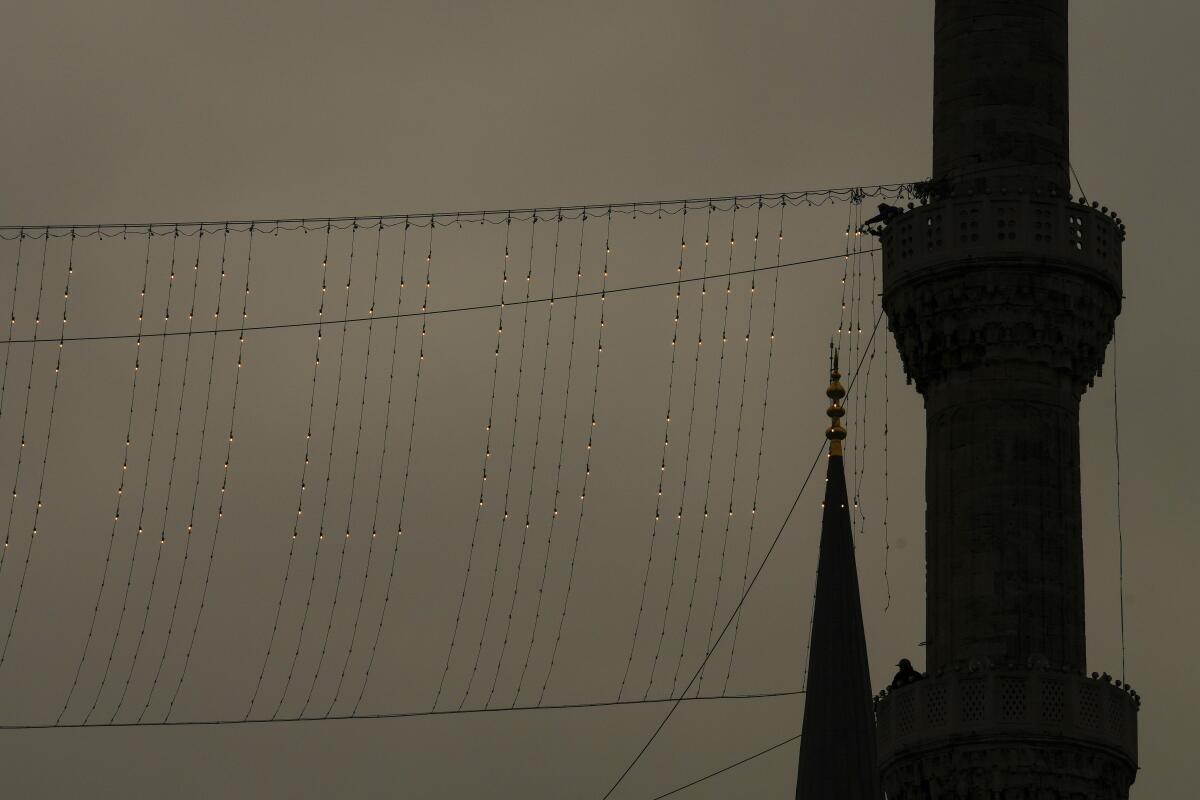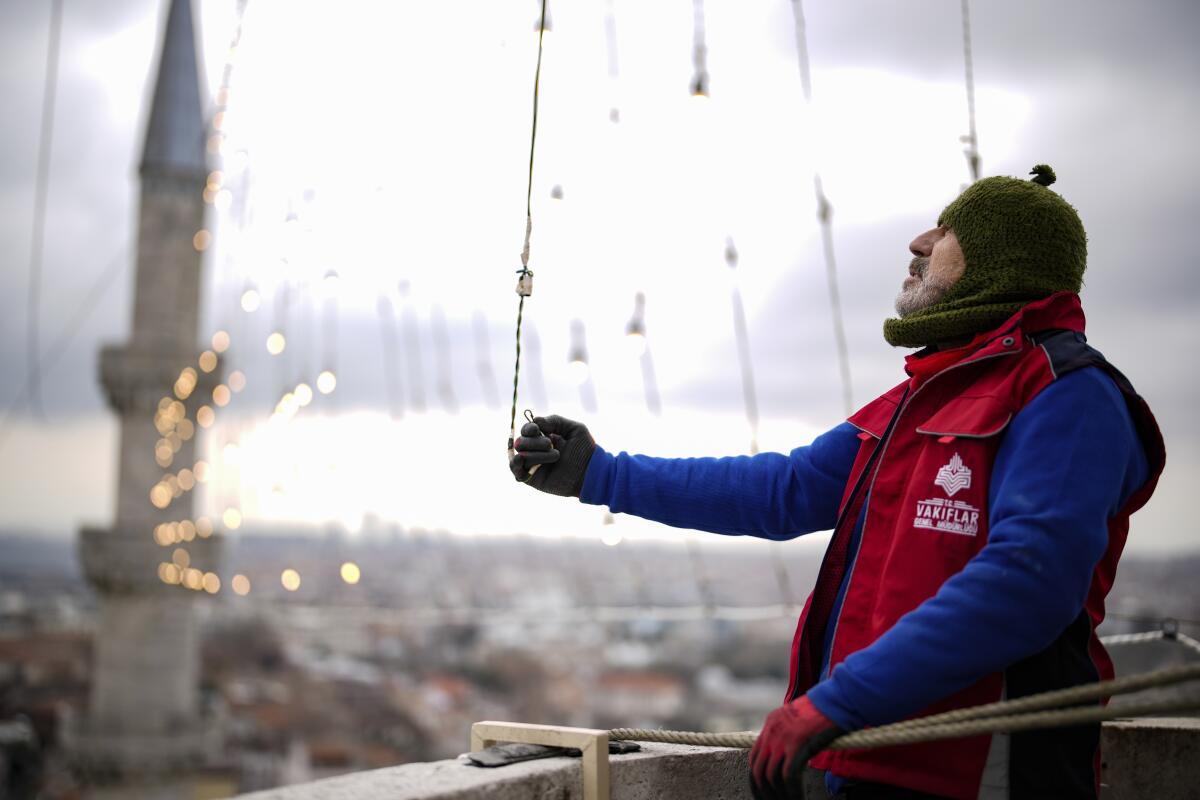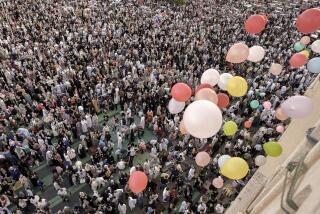A Turkish artisan has kept the Istanbul skyline lighted during Ramadan for decades. He may be the last

- Share via
ISTANBUL — In the heart of Istanbul, on top of the towering minarets that dot the city’s skyline, 68-year-old Kahraman Yildiz toils away at a craft that has illuminated the Muslim holy month of Ramadan for generations.
Yildiz, a master of Mahya, the Turkish tradition of stringing religious messages and designs between minarets, is facing the twilight of a practice deeply ingrained in Turkish culture that is also taken for granted.
For half a century, Yildiz has been a guardian of this art form, creating intricate designs that light up the night sky, encouraging faith and charity among observers.

His works carry messages that are meant for the faithful during Ramadan, a time of reflection and community.
However, with no apprentice as a successor in sight, the future of Mahya hangs in the balance.
Officials saw the crescent moon the night of Sunday, March 10, in Saudi Arabia, home to the holiest sites in Islam, marking the start of the holy fasting month of Ramadan for many of the world’s 1.8 billion Muslims. The sacred month, which sees those observing abstain from food and water from sunrise to sunset, marks a period of religious reflection, family get-togethers and giving across the Muslim world.
Seeing the moon Sunday night means Monday is the first day of the fast.
The Mahya art form is thought to be at least 400 years old, originating in the time of the Ottoman Sultans and originally prepared with oil candles.

According to Yildiz, the ancient tradition not only served as a visual spectacle but also carried spiritual messages.
“At a time when there was no television, cinema or newspapers, Mahyas existed as the visual medium,” he said.
Yildiz took on the mantle after the death of his mentor, the last Ottoman Mahya. The transition from oil candles to lightbulbs was done during his mentor’s time.
Although countless mosques in Turkey hang up Ramadan lighting with religious messaging and some even use LED lighting, only nine still benefit from Yildiz and the traditional Mahya craft.
“I take a list of the appropriate text and write them into the template. ... We create a string of writing and organize the bulbs. Then we set up a mechanism between the minarets and throw our ropes,” Yildiz explained.
Yildiz said he would gladly pass along his trade to the younger generation, if he found people willing.
“I hope this art will never end,” he said. “It is a 400-year-old Ottoman art, and it is a Turkish invention.”
Badendieck and Gurel write for the Associated Press. Mehmet Guzel contributed from Istanbul.
More to Read
Sign up for Essential California
The most important California stories and recommendations in your inbox every morning.
You may occasionally receive promotional content from the Los Angeles Times.










